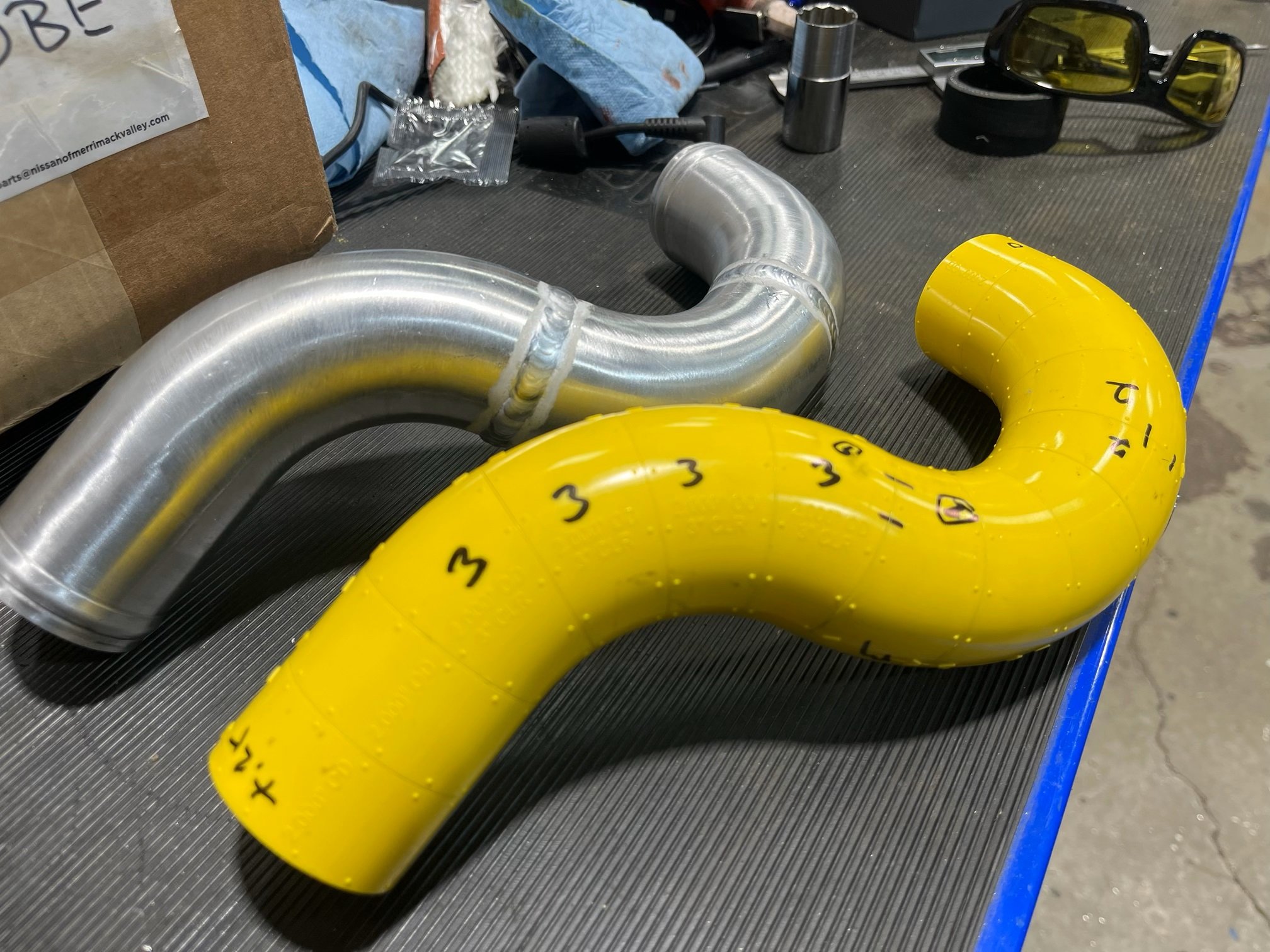Over four and a half years ago I modified the fuel filler neck to clear the throttle body and the induction tube (post here). The mod isn’t difficult, but you need someone with good welding skills because the neck is made from thin spun aluminum.
Stock (left) and modified (right)
The modification avoids the throttle body, but it guides things into a tight space between the 2”x 2” chassis rail and the oil reservoir. I used a flexible tube to connect the filler neck to the fuel tank. That worked, but it looked like ass and it rubbed both the chassis and the top of oil reservoir.
I recently pulled the engine and wanted to see if I could come up with a better solution. I started playing around with some 2” OD aluminum mandrel bends to determine if hard tube would work. After making a couple of cuts for mocking purposes it occurred to me that I had a whole set of 2” icengineworks blocks that I had used to design the headers. DUH! Fortunately I figured this out before wasting any material.
While designing the headers I found it difficult to conceptualize the shape when adding one block at a time. However, I found it intuitive to pre-construct J-bends and U-bends, hold them in place and then snap them apart in the desired location and, if needed, add or remove additional blocks. I was able to get a perfect fit with three mandrel bends clocked at different angles.
Perfect match to the prototype. Everything welded and hose beads rolled into each end.
At first I was concerned that the angle of the fill neck might make refueling difficult. However, with the stock setup the nozzle is typically pointed directly into a 90-degree bend. Whereas with the modified angle the nozzle is pointed straight down with no impediments.
It’s really tight, but even with body deflection nothing is going to rub. The horizontal hardlines are for the heater and the coolant bypass. I still need to add a cover plate to seal the firewall around the tube. The two bolt heads visible in that opening are for the rollover flapper valve.
I like where the fuel tank is located. However, it’s clear in this picture that fuel filler neck and fuel door are mounted to the fiberglass body and if the car rolled the fuel door could be easily torn off resulting in a 2” opening pouring vapor and gas into the engine compartment in close proximity to the headers. People worry about putting a rollover valve on the 6AN vent line, but ignore the fill tube which is 28 times larger. I replaced the stock fuel tank with a FIA-compliant fuel cell which, amongst other safety features, has a rollover flapper valve. It would be straightforward to retrofit the stock fuel tank with one.




